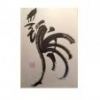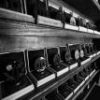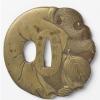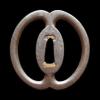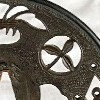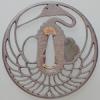Leaderboard
Popular Content
Showing content with the highest reputation on 04/28/2025 in all areas
-
All, So just to re-cap the show. As always, Mark and crew put on a WONDERFUL show. Great seeing old friends/acquaintances, shaking hands, sharing new acquisitions, and just catching up a bit. Unfortunately, as I age, leaning over the table and looking down at items can take its toll on the old back… but it is a risk I am willing to take! The presentations on Saturday were top notch and we got to look at/hold fittings and blades that may rarely come around again. Matt Jarrell’s presentation highlighting the change in shape of swords over time was very informative. You know that ‘pictorial chart’ in books of blades showing that information? Well, you got to look at and hold that chart in person! From Heian to Shinshinto. How many opportunities like that come along? It was mentioned that some of the fittings from that presentation may be posted on-line for viewing, but I will have to let those associated with that comment. Please… if you have the opportunity to go to this show or any others in the future, make every attempt. You will NOT be disappointed and they really need our support. Once again, thank you to Mark and all!7 points
-
4 points
-
I never intended for what I thought was a simple question to turn into a heated debate. I has, however, been very educational.3 points
-
3 points
-
2 points
-
Show this year was excellent, good spacing in the main room so you can really see and handle the antiques without feeling cramped. Really liked the crew from Japan who had all the high end Tsuba, studying their wares was a high level class you don't often have access too. Sword prices were very affordable. Best thing to do is forget about buying blades online and just save your money for the show because whatever you are interested in there are multiple examples to buy and the guys are ready to sell for cash.2 points
-
Both Kiri and Fuji are in blossom everywhere right now. Although the flowers are similar in colour and style, from a distance, the leaves are very different. Fuji, wisteria has rows of slim oval leaves, but Kiri paulownia leaves are each wide and multi-lobed. Fuji is a vine, somehow endlessly associated with the powerful Fujiwara family, whereas Kiri is a tree with Shogunate and imperial connections.2 points
-
Burt, obviously, you are not informed about carbon dating: Radiocarbon dating (also referred to as carbon dating or carbon-14 dating) is a method for determining the age of an object containing organic material by using the properties of radiocarbon, a radioactive isotope of carbon..... The measuring accuracy is about +/- 40 years, so would not work for WWII.2 points
-
It does add to their history - I don't think most people would mark their collections anymore, but then we have the ability to photograph and take detailed digital records. I just traced some more information from some old references, which can show how some information can get lost and now brought back together. These two images are two years apart and neither source had both sides published - goes to show that sometimes displaying the incorrect side can come in handy otherwise you would need to guess what the other side looked like. The Poncetton image has a paper tag attached to the nakago-ana & hitsu so it didn't have to have a number painted on - these little paper tags are a less intrusive way to catalogue a collection, pity we can't read the information on it. It would appear Poncetton didn't like stickers on his tsuba in all cases? fickle2 points
-
2 points
-
I primarily collect sword-makers tsuba. The aim being to own work by sword-makers whose blades I would otherwise not be able to afford. The only boundaries are age, health and pocket book. I suppose I am the soul of my collection. I have two pieces at the heart of my collection of which I am very proud; a Juyo Bizen Morisuke tachi that is ubu signed and dated to 1335, and a juyo tosogu daisho set of tsuba by Chikanori custom made by order of Mito Rekko. More than this I cannot hope for so am very content with what I have achieved thus far...2 points
-
1 point
-
Hello everyone, some time ago I purchased this wakizashi and I would like to ask for your thoughts what it could be. Nagasa 38,2 cm (15,04 in) Sori 0,7 cm (0,28 in) Moto-haba 2,2 cm (0,87 in) - it is a bit wider (1 mm) in upper part Moto-kasane 0,4 cm (0,16 in) - at shinogi line, about 1 mm at mune Weight 330 g If any aditional photos are needed or better quality, I can try. It was (relatively) cheap, so i don't expect it to be Masamune My personal guess is that it could be naginata naoshi from mid Muromachi (I have no idea about the school). But my personal guess worth noting since I have no experience so I am very curious about your opinion. Thank you very much in advance! Have a nice day Jan1 point
-
Looks like a nice naginatanaoshi Jan. Perhaps Muromachi Mino (following after Naoe Shizu, between Shigaseki and later Sue-Seki).1 point
-
Unfortunately this guy takes not bad to actually good shinshinto and later blades, etches utsuri, signs kimpun mei and then sells them as ichimonji or masamune. He has been doing this for years.1 point
-
I'm highly suspicious of the 'utsuri'. Andrew Ickeringill brought these artificial utsuri effects by unscrupulous sellers to light some years ago. The blade might have been acid etched as the features look rather forced and unnatural, at least from these photos. Worth bumping for all the new members1 point
-
1 point
-
1 point
-
I have a just a few sets of flashcards left and will likely not print additional sets this year. If anyone was thinking about purchasing a set, please reach out and let me know. https://swordsofjapan.com/product-category/supplies/flashcards/ For anyone who might be interested in learning how to read Japanese sword inscriptions, I created several educational sets in the form of flashcards, with the intention of teaching both how to read kanji, and also to provide study material related to the Japanese sword: schools, time periods, smith's mei, terminology, etc. Set 1: Commonly seen kanji for swordsmith mei, with an average of 4 examples using that kanji Set 2: Provinces, with information on each and including some representative swordsmiths and schools Set 3: Time periods from late Heian to present, with material on each era Each set is US25 + shipping & PP. If you would like to order, please message me directly with your name, shipping address, email and which set you would like. Examples of each type are attached here.1 point
-
Nice bit of detective work there. @Spartancrest (Dale) Thank you for sharing this. Some very interesting unique tsuba, and a good point about seeing both sides of a tsuba.1 point
-
Hello! I have always been interested in all things Nihonto; however, I have never had the money to get into collecting. I recently have been given a promotion at my job and have the disposable income to hopefully begin officially collecting! I am looking to purchase my first Nihonto katana, and hoping to spend at max $1,200. I know that most pieces are much more expensive than that, but I was hoping to someone may be looking to clean out some less desirable pieces in their collection. If anyone has a Nihonto preferably in shirasaya that is on the lower end of the desirability scale, I would be more than interested. I am located in the USA. Thanks!1 point
-
TJ I also like your simple and straight forward approach ...don't aim too high, get something modest in hand and start your research and appreciation from there. Just like your first fishing rod etc. Crawl before you walk sort of thing. Whether a Katana or Wakizashi, just make sure you actually like .... not just 'a good buy'. Plenty of help here.... just keep asking (and read a little too )1 point
-
TJ Happyzebra seems to have some good ideas on how to approach this, and I can understand the desire to start with a blade in hand, almost any blade. And before even that, he/she has decided to consult here first. Owning a blade, with the responsibilities involved, certainly helps to focus the mind, and with that anchor you can then build a frame of reference around it, discovering useful sources of information concerning its various relevant aspects. Two or three blades down the road and some of these larger frames can start to interlink, creating the outlines of a Japanese sword universe inside your cranium. That first blade may suffer some indignities in the hands of a newcomer though!!! Good luck and happy hunting!1 point
-
Another one. The polisher thought its imitation of Hizen Tadayoshi. I disagree, believing its actually a good rendition of Bungo Yukihira's jigane with tobiyaki and dark chikei. Note: even today few people studied Yukihira's blade in excellent condition, but apparently Bungo Yukinaga did. It is surprising thing about Bungo smiths - they spend a lot of time learning from older blades and a few excelled in reproducing them.1 point
-
1 point
-
Beyond the debate, this thread is a pleasure for the eye! There are beautiful pics here and there. Love Naginata Naoshi.1 point
-
Indeed we are all the souls of our collection , may it be a real or an "in mind" collection. The question could have been some sort of "who are you?". All of yours answers are very inspiring. Thank you very much.1 point
-
Like others have said, the soul of my nihonto collection has little to do with intrinsic value and more to do with sentimentality. As such, some of the most meaningful pieces aren’t necessarily the rarest or most valuable—they’re the ones tied to memories. The tsuba I was given by my daughter as a birthday present, the wakizashi that sparked a long conversation with a fellow collector who became a friend, or the unexpected Mercari find that sent me down a research rabbit hole. These memories give the collection a kind of living thread, binding together styles and schools that might otherwise seem disparate.1 point
-
Thank you so much, my eyes didn't see the end of it in the picture I thought it was much longer but it makes sense now as I expanded. If only it was refund time. Sending PM Anyway.1 point
-
This topic is discussed all over the place as folks post their swords, but I'd like a dedicated thread we can refer to. I've come across a penultimate example of the style on this Wehrmacht-award Thread. This gunto was clearly (now in 2023) an NCO blade that was bought by an officer and fitted out appropriately for his use. About the shortage: https://www.warrelic...blades-gunto-688110/ About buying 95s: "1937 Officers had to make do with Type 95 NCO swords due to a worsening shortage The only shortage problem that Ohmura-san’s site refers to is the long ago case of 1931/32 when shortages of officer swords required the arsenal to sell prototype type 91 NCO swords to officers. He failed to notice that by 1937 new officers found that they could not get hold of any swords to complete their outfits as per regulations. So in desperation, they turned to the arsenal, asking that they be allowed to purchase the Type 95 NCO swords as a substitute. On 29th July 1937, their request was granted and it was agreed to let them buy Type 95s at a price of 33 Yen a piece. They were to fill in the private purchase application forms as provided in the July 1937 memo and apply to Kokura or the Tokyo Arsenal directly with the money. Not only officers in the field, but also vets back home were allowed to buy these NCO swords. The army thus ended up with many officers equipped with the wrong swords. Here is the July 1937 application for officers to purchase their Type 95 NCO swords. Part one was the request to buy and the other sheet was a note promising to pay the 33 Yen by the date to be designated by the arsenal. One required the unit commander’s signature and signet or when one was a veteran, that of the regimental district commander. We now know there were a couple of severe sword shortages during the war and, thanks to Nick Komiya's records work, we now know that officers were allowed to buy, even rent, NCO swords for their use. We have, for years, assumed these blades were re-fitted post-war by collectors, but the matching numbers "71" on the nakago and the fittings confirm this was a wartime rig. Only NCO blades bore serial numbers, just to clear up some of the older discussion points." Source: Authorization to Buy Type 95s You can see the rig was made this way, with "71" stamped on the nakago as well as on the fittings. Also, for research purposes, note the triple "W". The OP doesn't show the whole gunto, or the saya, but describes them as standard Type 98 in his first post.1 point
-
@Bruce Pennington OP's sword is a later Zoheito with a solid tsuba. Please take a close look: the NCO blade with serial number 133859 was posted by Stu as a reference to show OP what a standard NCO blade looks like. Later, Silesien posted his blade, which has no serial number. Most importantly, it has only one mekugi-ana.1 point
-
Just browsing through some of the social media for sale groups, there's plenty of showato/ gunto for c. $1500 up. For older, traditionally made blades I think I saw one for $1600 - so his budget isn't miles away. But north of $2000 is a more common baseline, and obviously up from there. I totally understand the enthusiasm to buy something (anything) to scratch the itch. But I would recommend the OP doing a little more research, maybe buy a book or two, maybe stretch the budget a little - you can find something pretty special - that you'll get more enjoyment out of (after the novelty has worn off).1 point
-
This was in Plimton's book. No blade shown: This one leads into the group of gunto with varing amounts of mixed officer/NCO parts. I've seen several NCO blades with 95 tsuka/tsuba in officer saya, like this on from Plimpton. More puzzling are the Type 95s with signed blades that would normally be in officer fittings. I have 2 of these on file. Personally, though, I'd be more likely to believe these were custom blades paid for by an NCO with money, who wanted a quality blade in his rig. The shortages that drove officers to buy Type 95s were blade shortages, not fittings shortages. An example: Masatsugu, Jun 1945, posted by @drb 1643 Another Masatsugu, April 1945 from @mdiddy1 point
-
1 point
-
I forgot about this thread until Sam - @Scogg - came up with another example. The early (copper handle era) number on this one and another from @Stegel falls inline with the era discussed in Nick Komiya's discussion. I don't know what date range the one on the OP phots falls in, but there were shortages throughout the war that would have caused a young officer to resort to this way of obtaining a sword. Sam's find: Stegel's gunto1 point
-
1 point
-
Martin, you should find a lot of the info you want (as well as sent to you) on the following paper in NMB Downloads1 point
-
The problem is that you can't say the polisher knows if you don't know the process. And yes, the scientific method can be applied anywhere.1 point
-
I found this in a book about tsuba thar are displayed in a museum. It appears to be cast iron and is described as "cast" and "iron". There are cracks in the hitsu and other signs that it is cast. My question is why would a museum display this tsuba? What are they trying to show and communicate with their visitors? Could it be they are trying to show that there is such a thing as early cast iron tsuba?" Just some more interesting stuff. Onward!1 point
-
Dear Burt. To summarise somewhat. This is a very nice sword, the thick seppa/washers and the pierced tsuba/guard as well as some other features are probably what lead your friend to tell you it was 1934, there is a quality about these mounts which not all Shingunto have. The original label called it a tachi because of the fact that the mei/signature is on the side usually called tachi mei, most katana are signed on the other side of the tang. Now as Chandler has already said this is a distinctive feature of the Hizen school who tended to sign tachi mei on katana, it would not mean that the sword was a tachi though from a dealer point of view it might be nice to describe it as such. Dating it to Shinshinto or late Edo period is understandable but in this case wrong I think. Have a look at this thread, particularly about 11 posts down where Morita san has posted an oshigata that matches well with yours. This does suggest that this smith was known for forging gendato, traditionally forged swords as opposed to Showato which are not traditionally forged. To my eye and from your photographs your sword does look interesting and I wouldn't be surprised if it does turn out to be gendaito which puts it into a whole other bracket. Go slow, don't do anything more than wipe the blade surface with some very light oil and get in touch with a local sword club who can examine the sword in hand and tell you more. There is a ton to learn and a never ending mine of information to assimilate but the journey is fun. All the best. All the best.1 point
-
1 point
-
If that one were not signed, I don't think I could have placed it as Issei Naruki. I owned a very good Kamiyoshi of this design for about 3 years. Yet the design goes much further back in the Higo Schools. You coming to Chicago? If so, I might be so bold to ask you to bring a specific tsuba. This last year I've spent a lot of time getting to know a specific artist, and I believe you have a great example of his work.1 point
-
1 point
-
Jacques, am I wrong, or are you suggesting that all the naginata naioshi examples in this thread with kaeri - several with Juyo Token - are not really naioshi at all, but are blades either forged in naginata naioshi zukuri style or were fashioned from blades with other sugata? I mean, you are obviously entitled to whatever beliefs you want to adhere to, but these are all blades identified by the various NBTHK shinsa panels as being naginata naioshi. And they obviously have kaeri. So, logically, based on your argument, either it is possible to alter certain shapes of naginata in such a way to preserve at least some of the turn back, or the NBTHK, which you usually defend as being the kinds of experts we civilians hobbyists could never be, are clueless when it comes to this blade form? Not trying to be facetious here, but these are the only logical conclusions I can draw from your argument. That doesn't mean that in most cases -- as you point out -- that the kaeri is lost because of the shape of the original naginata, but it seems obvious that it doesn't apply to every one. Just sayin...1 point
-
I am re-reading Robert Haynes’ Study Collection of Japanese Sword Fittings, and I am once again intrigued by the drawings of #s 16 and 44, which show an original triangular shape to the hitsu-ana. Has any member, I wonder, ever seen a tsuba, – or an illustration of a tsuba – that demonstrates this feature? Not that I am questioning Haynes’ expertise in this matter…. John L.1 point
-
Thank you all of you for your comments and your point of view. It has helped me a lot.1 point
-
FYI, comparison of swords without a hi and with a hi. Watch from 5:30. 日本刀に彫ってあるミゾ(樋)はどんな意味があるの?溝がある刀とない刀の違い(What does the groove on a Japanese sword mean?)1 point
-
1 point
-
1 point
This leaderboard is set to Johannesburg/GMT+02:00


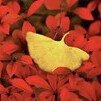


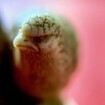



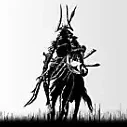
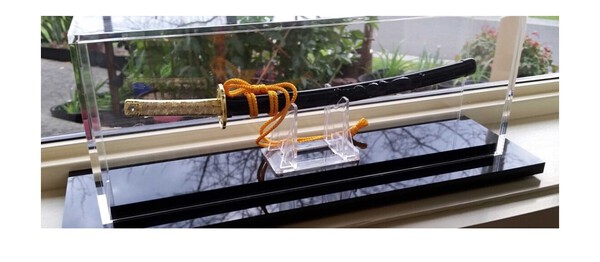
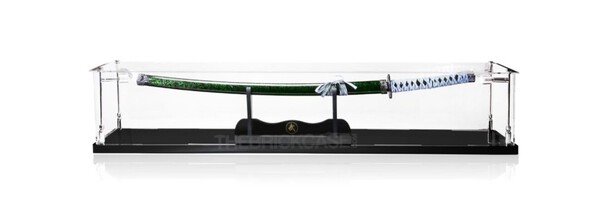


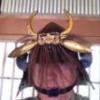
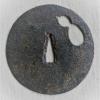




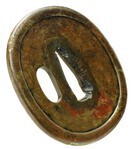












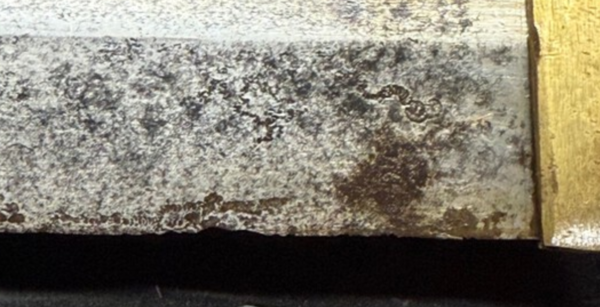
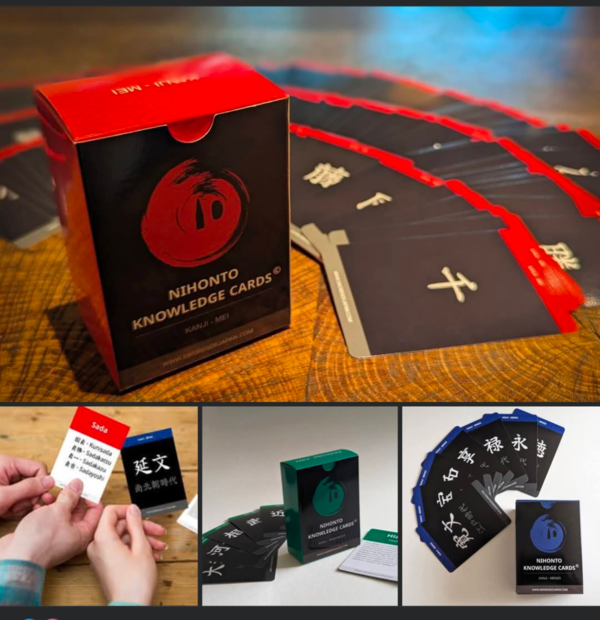

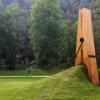








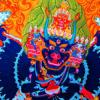










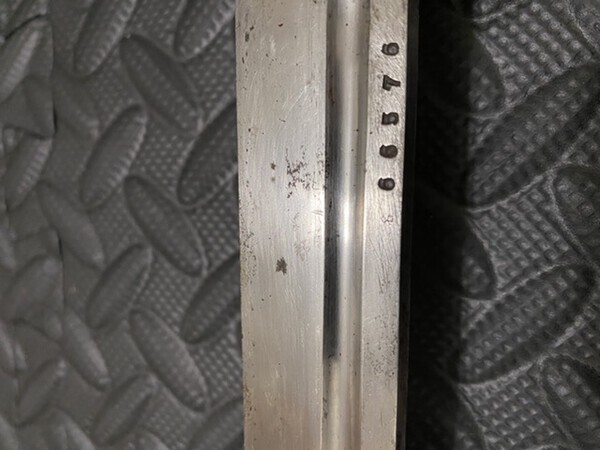

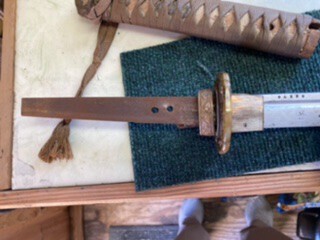

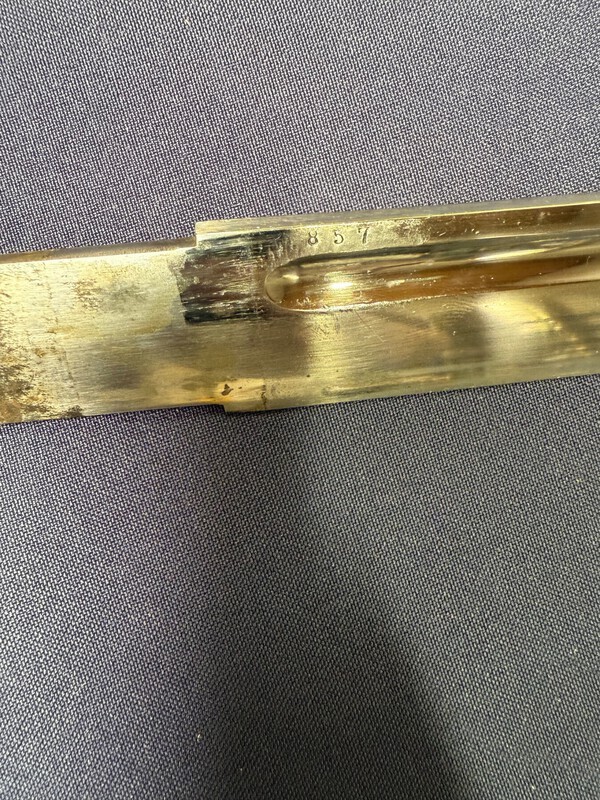
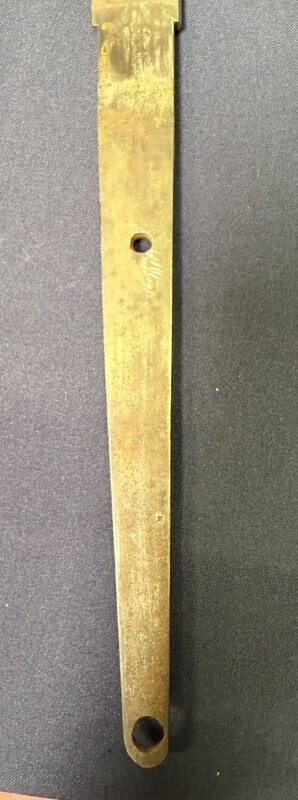
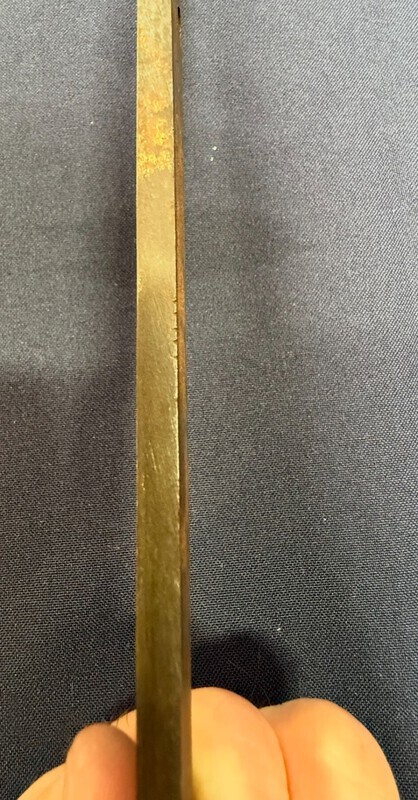

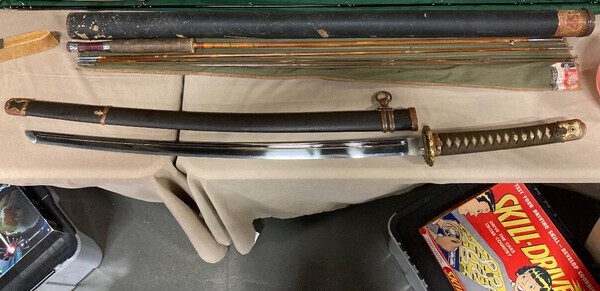
-Copy.thumb.jpeg.c0ea8fc0dc9ff5c5e0e1b569a32a36c7.jpeg)
-Copy-Copy.thumb.jpeg.db71ee7e9004889253f30af72c685ac8.jpeg)
.thumb.jpeg.8b6ab8b15bd8196f4cb4c14117efdddd.jpeg)
.thumb.jpeg.7519f6123b94206eff0c9fd0284f2e26.jpeg)
-Copy.thumb.jpeg.02355387231392fa13ae33201a11b33f.jpeg)






